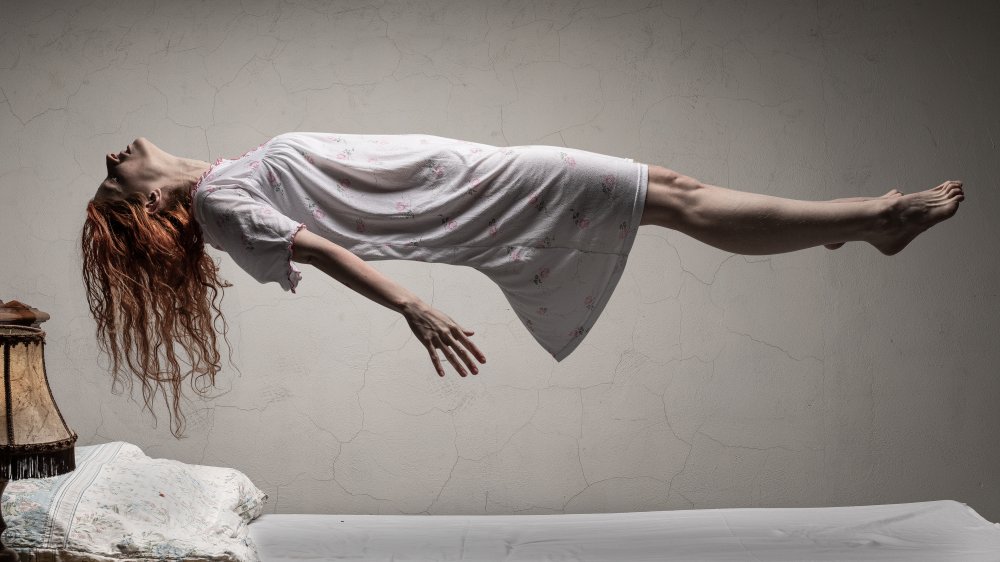Here's How To Make Yourself Lucid Dream
There are dreams, and there are dreams. For Bogart fans, there's his line in The Maltese Falcon when Sam Spade refers to the statuette in question as "the stuff that dreams are made of" — in that case, gold. More apt, perhaps, are these words: "We are such stuff / as dreams are made on," says Prospero in Shakespeare's The Tempest, "and our little life / is rounded with a sleep," relayed by Dictionary. Spade is talking about desires; Prospero, the fleeting quality of life, likening it to the transitory visions in sleep. Lucid dreaming is sort of a happy combination of the two. Potentially, anyway.
According to at least one source — Berit Brogaard, interviewing Beverly D'Urso for Psychology Today — "Lucid dreaming is your chance to play around with the extraordinary abilities buried in unused parts of your brain." Hope Ngo, writing for The List, describes it this way: "Scientists say lucid dreaming happens when you become aware that you are dreaming... but this happens while you're still in the dream state."
Flying in dreams isn't necessarily a good thing
Most dream experiences — during sleep, not daydreaming or competing with Sam Spade — don't feel like the dreamer is in control. That romantic encounter that you yearned for but never had? It happens in your dreams. You wake up smiling, wishing you could go back, a sweet memory that's yours to keep. Or a nightmare — you wake up sweating, perhaps struggling, even waking yourself by crying out — and out of your control. Flying, or falling? Kissing, or cringing?
Lucid dreaming offers a different experience. You're dreaming, but you know you're dreaming, and to a certain extent, you can control what happens — that's often how beginners start — though that isn't required. Psychophysiologist Stephen LaBerge has conducted research that indicates, says Healthline, a number of benefits from lucid dreaming, including treatment for PTSD and anxiety. Kristen LaMarca, one of LaBerge's research partners, says, "The technique can help us creatively solve problems of everyday stressors."
Lucid dreaming sometimes eases anxiety
How to do it? One technique is to wake yourself up every five hours, to remind yourself that when you hit Rapid Eye Movement (REM) sleep, remind yourself that you're dreaming. It's a form of "prospective me-mory" — a way to remind yourself to do something. Another is to increase your own awareness of your surroundings while you're awake — a sort of hyper-awareness of your environment, which in turn often carries over into the sleep state.
The dreams can lead to insights, including, according to some, spiritual insights. "It certainly makes you a more enlightened person," dream researcher Beverly D'Urso told Psychology Today. "You learn to be in the present moment and to notice your surroundings and take in things without being sidetracked by random thoughts or the past or the future."
Dr. Naveed Salah, also writing for Psychology Today, observes, "There's limited research on many of these lucid dreaming techniques. We don't know for sure which of these techniques works best." But we can dream, can't we?


